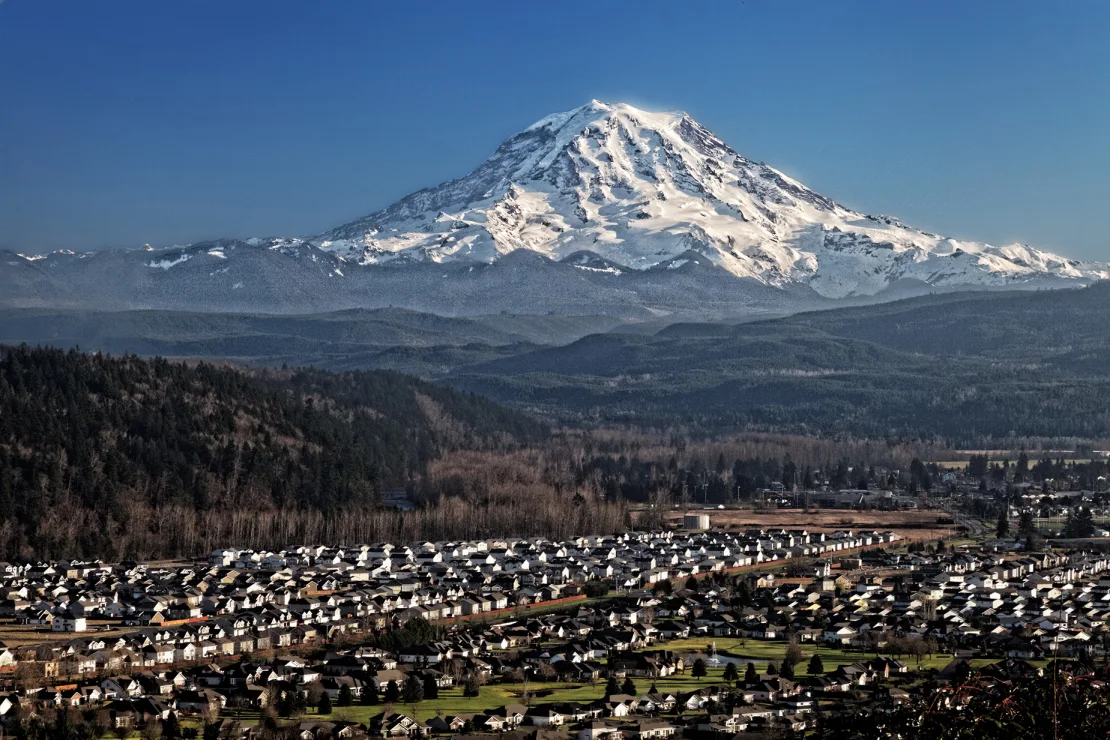The snowcapped peak of Mount Rainier, which towers 4.3 kilometers (2.7 miles) above sea level in Washington state, has not produced a significant volcanic eruption in the past 1,000 years. Yet, more than Hawaii’s bubbling lava fields or Yellowstone’s sprawling supervolcano, it’s Mount Rainier that has many US volcanologists worried.
“Mount Rainier keeps me up at night because it poses such a great threat to the surrounding communities. Tacoma and South Seattle are built on 100-foot-thick (30.5-meter) ancient mudflows from eruptions of Mount Rainier,” Jess Phoenix, a volcanologist and ambassador for the Union of Concerned Scientists, said on an episode of “Violent Earth With Liv Schreiber,” a CNN Original Series.
The sleeping giant’s destructive potential lies not with fiery flows of lava, which, in the event of an eruption, would be unlikely to extend more than a few miles beyond the boundary of Mount Rainier National Park in the Pacific Northwest. And the majority of volcanic ash would likely dissipate downwind to the east away from population centers, according to the US Geological Survey.
Instead, many scientists fear the prospect of a lahar — a swiftly moving slurry of water and volcanic rock originating from ice or snow rapidly melted by an eruption that picks up debris as it flows through valleys and drainage channels.
Mount Rainier, a snowcapped volcano, looms over Puyallup Valley near Orting, Washington. The prospect of a lahar — a swiftly moving debris flow caused by melting snow and ice typically during a volcanic eruption — poses a threat to surrounding communities. Ed Ruttledge/U.S. Geological Survey Cascades Volcano Observatory
“The thing that makes Mount Rainier tough is that it is so tall, and it’s covered with ice and snow, and so if there is any kind of eruptive activity, hot stuff … will melt the cold stuff and a lot of water will start coming down,” said Seth Moran, a research seismologist at USGS Cascades Volcano Observatory in Vancouver, Washington.
“And there are tens, if not hundreds of thousands of people who live in areas that potentially could be impacted by a large lahar, and it could happen quite quickly.”
Read more at CNN.com



